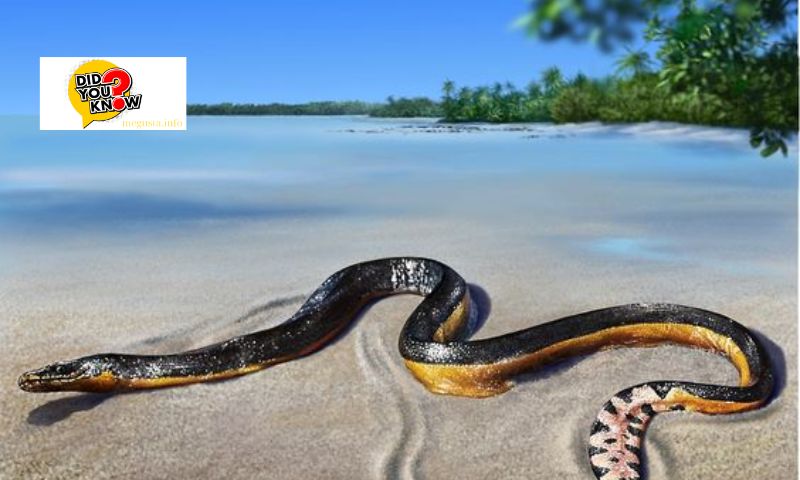The yellow-bellied water snake (Nerodia erythrogaster) is a fascinating species native to North America, renowned for its distinctive coloration and aquatic lifestyle. In this comprehensive guide from Megusta.info, we delve into its appearance, habitat, behavior, and conservation status to provide a thorough understanding of this often-misunderstood reptile.
Appearance and Physical Features

The yellow-bellied water snake is characterized by its slender, elongated body, typically reaching lengths of up to three feet. Its dorsal coloration varies from brown to olive-green, often featuring dark blotches or stripes along the back. However, what truly distinguishes this species is its vibrant yellow or orange belly, which gives it its name. This bright coloration serves as a warning to potential predators and aids in thermoregulation when basking in the sun.
Habitat and Distribution
Yellow-bellied water snakes are primarily found in freshwater habitats across the southeastern United States, including rivers, lakes, ponds, and marshes. They prefer slow-moving waters rich in aquatic vegetation, which provides cover and facilitates hunting. Their range extends from Virginia to Texas, encompassing states like Georgia, Alabama, and Mississippi. This wide distribution reflects their adaptability to diverse wetland environments.
Behavior and Diet
These snakes are predominantly diurnal, and active during daylight hours when they hunt for prey such as fish, amphibians, and small aquatic invertebrates. They are non-venomous and rely on constriction to subdue their prey. Yellow-bellied water snakes are excellent swimmers and can often be observed floating or swimming near the water’s surface, using their keen senses to locate potential meals. Despite their aquatic prowess, they are also capable of moving on land, especially during migration or when seeking out new habitats.
Reproduction and Life Cycle

During the breeding season, which spans from late spring to early summer, male yellow-bellied water snakes exhibit fascinating behaviors aimed at reproductive success. This period is marked by ritualistic combat among males, where they engage in intense wrestling matches to establish dominance and gain access to females. These combat rituals, often observed in shallow waters or on exposed banks, involve intertwining their bodies and attempting to force each other into submissive positions. The victor of these contests earns the right to mate with receptive females, showcasing a competitive yet essential aspect of their reproductive strategy.
Following successful mating, females undergo a gestation period lasting approximately three to four months. This period is crucial for the development of the embryos within the female’s body. The number of offspring born in a single litter can vary significantly, influenced by environmental factors such as temperature, food availability, and the health of the mother. On average, a litter size ranges from 5 to 20 young, though larger litters have been documented under optimal conditions.
Unlike many snake species that lay eggs, yellow-bellied water snakes are viviparous, meaning they give birth to live young. This adaptation allows the mother to provide a more controlled and protected environment for the developing embryos, increasing their chances of survival. Upon birth, the newborn snakes emerge fully formed and capable of independent movement. They are immediately tasked with hunting small prey, such as fish and amphibians, to sustain their rapid growth and development.
The early life stages of yellow-bellied water snakes are critical for their survival in their aquatic habitats. Young snakes must quickly adapt to hunting techniques and predator avoidance strategies to navigate the challenges of their environment. While mortality rates among newborns can be high due to predation and environmental factors, those that survive the initial vulnerable period grow rapidly, benefiting from abundant food sources and relatively few natural predators during their juvenile stages.
Conservation Status and Threats

The conservation status of the yellow-bellied water snake is generally stable across its range, classified as a species of least concern by the International Union for Conservation of Nature (IUCN). However, localized threats such as habitat loss due to urbanization, pollution from agricultural runoff, and persecution by humans pose risks to certain populations. Efforts to conserve wetland habitats and educate the public about the importance of these ecosystems are critical to ensuring the long-term survival of this species.
Human Interaction
Encounters between yellow-bellied water snakes and humans are relatively common, especially in areas where urban development encroaches upon natural habitats. These snakes are generally non-aggressive and will often flee when approached. Despite their harmless nature, misconceptions and fear sometimes lead to unnecessary harm or persecution. Educating the public about the ecological role of these snakes in controlling aquatic populations and maintaining ecosystem balance is essential for fostering coexistence.
Conclusion
In conclusion, the yellow-bellied water snake embodies the resilience and adaptability of North America’s diverse wetland ecosystems. Its striking appearance, coupled with its ecological significance as a predator of small aquatic organisms, underscores the importance of conservation efforts aimed at preserving its natural habitats. By understanding and appreciating the role of the yellow-bellied water snake within its ecosystem, we can contribute to safeguarding biodiversity and promoting harmony between human activities and wildlife conservation.

